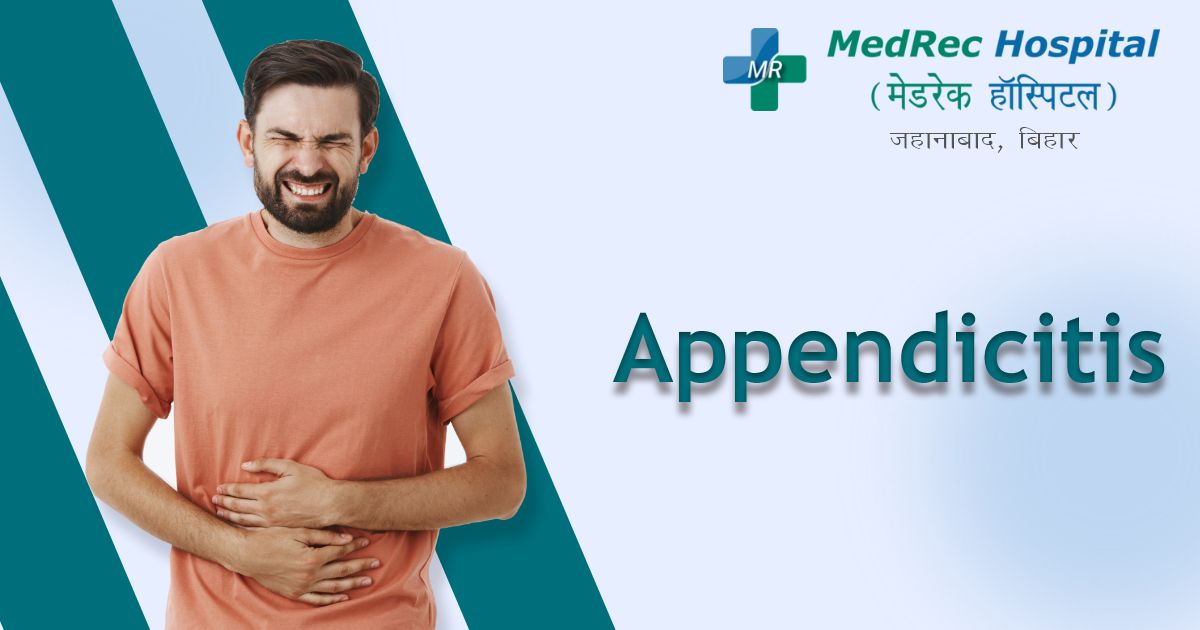
Appendicitis: What It Is, Causes, Symptoms and Treatment Options
796
The appendix, a finger-shaped pouch that emerges from your colon on the bottom right side of your abdomen, becomes inflamed when you have appendicitis.
If you have appendicitis, the lower right portion of your abdomen hurts. However, the pain typically begins close to the navel and spreads for the majority of patients. As the inflammation progresses, appendicitis pain frequently gets worse until it is finally intolerable.
Anyone can have appendicitis, although individuals between the ages of 10 and 30 are the ones who get it the most frequently. The appendix is typically removed surgically as treatment.
Causes
The most frequent cause of appendicitis is an infection brought on by a blockage in the lining of the appendix. The bacteria multiply quickly, causing swelling, inflammation, and pus filling of the appendix. The appendix may rupture if immediate treatment is not given.
How to check if you have Appendicitis?
If you or your child exhibits concerning symptoms or signs, schedule an appointment with a doctor. Urgent medical care is necessary for severe stomach pain.
Your doctor will probably collect a history of your signs and symptoms and inspect your belly to help diagnose appendicitis.
The following tests and techniques are used to diagnose appendicitis:
Physical examination to evaluate your pain. The aching region could be gently touched by your doctor. When pressure is suddenly released, appendicitis pain frequently worsens, a sign that the peritoneum in the area is agitated.
Additionally, your doctor may examine you for abdominal stiffness and a tendency for your abdominal muscles to stiffen in response to pressure on an inflamed appendix (guarding).
Your doctor might inspect your lower rectum with a greased, gloved finger (digital rectal exam). A pelvic examination may be administered to women of childbearing age to look for any gynaecological issues that might be creating the discomfort.
A blood test. Your doctor can thus check your white blood cell count to look for indications of infection.
A urine test. To make sure that a kidney stone or a urinary tract infection are not the source of your pain, your doctor can ask you to have a urinalysis.
Imaging exams. Your doctor might also suggest an abdominal X-ray, abdominal ultrasound, computed tomography (CT) scan, or magnetic resonance imaging to help diagnose appendicitis or rule out other potential causes of your pain.
Symptoms
Appendicitis symptoms and signs might include:
- Unexpected right-sided right lower abdominal pain.
- Unexpected pain that frequently extends from your navel area to your lower right abdomen
- Pain that worsens with coughing, jarring movements, or other actions
- Vomiting and diarrhea
- Reduced appetite
- Low-grade fever that might worsen as the illness worsens
- Bloating or diarrhea
- Stomach bloating
- Flatulence
Depending on your age and the location of your appendix, the location of your pain may change. Because your appendix is higher during pregnancy, the pain may seem to originate in your upper abdomen.
Treatments
Appendicitis treatment usually includes surgery to remove the inflamed appendix. You might receive an antibiotic dose before surgery to treat an infection.
Having the appendix surgically removed (appendectomy)
An open appendectomy can be performed through a single abdominal incision between 2 and 4 inches (5 and 10 cm) length (laparotomy). Alternatively, the procedure could be carried out with a few tiny abdominal incisions (laparoscopic surgery). During a laparoscopic appendectomy, the surgeon removes the appendix using specialised surgical tools and a camera inserted into your abdomen.
In general, laparoscopic surgery enables you to recover more rapidly, with less discomfort and scarring. For older adults and obese persons, it might be better.
However, not everyone should have laparoscopic surgery. A different alternative is an open appendectomy, which enables your surgeon to clean the abdominal cavity. It may be necessary if your appendix has ruptured, and the infection spread to other areas or you have an abscess.
After your appendectomy, doctors may recommend for you to stay in the hospital for one or two days.
Removing an infection prior to appendix surgery
A tube can be inserted through your skin and into the abscess if one has formed around your ruptured appendix and needs to be drained. An appendectomy can be performed after the infection has been under control for a few weeks.
Complications of Appendicitis
Serious consequences from appendicitis include:
- An appendix rupture.
A tube can be put through your skin and into the abscess if one has formed around your ruptured appendix and needs to be drained. An appendectomy can be performed once the infection has been under control for a few weeks.
- A sac that forms in the abdomen and is filled with pus.
If your appendix ruptures, you can develop a pocket of infection (abscess). Most frequently, a surgeon uses your abdominal wall to implant a catheter into the abscess. The infection is treated with medication, and the tube is left in your body for about two weeks.
Once the infection has been treated, a procedure will be performed to remove the appendix. In some cases, the appendix is immediately removed following the drainage of the abscess.
For further information please access the following resources:
Emergency : +91 89686 77907
Front Desk : +91 98018 79584
Page last reviewed: Mar 6, 2023
Next review due: Mar 6, 2025







.jpg)
.jpg)
.jpg)
.jpg)
.jpg)
.jpg)